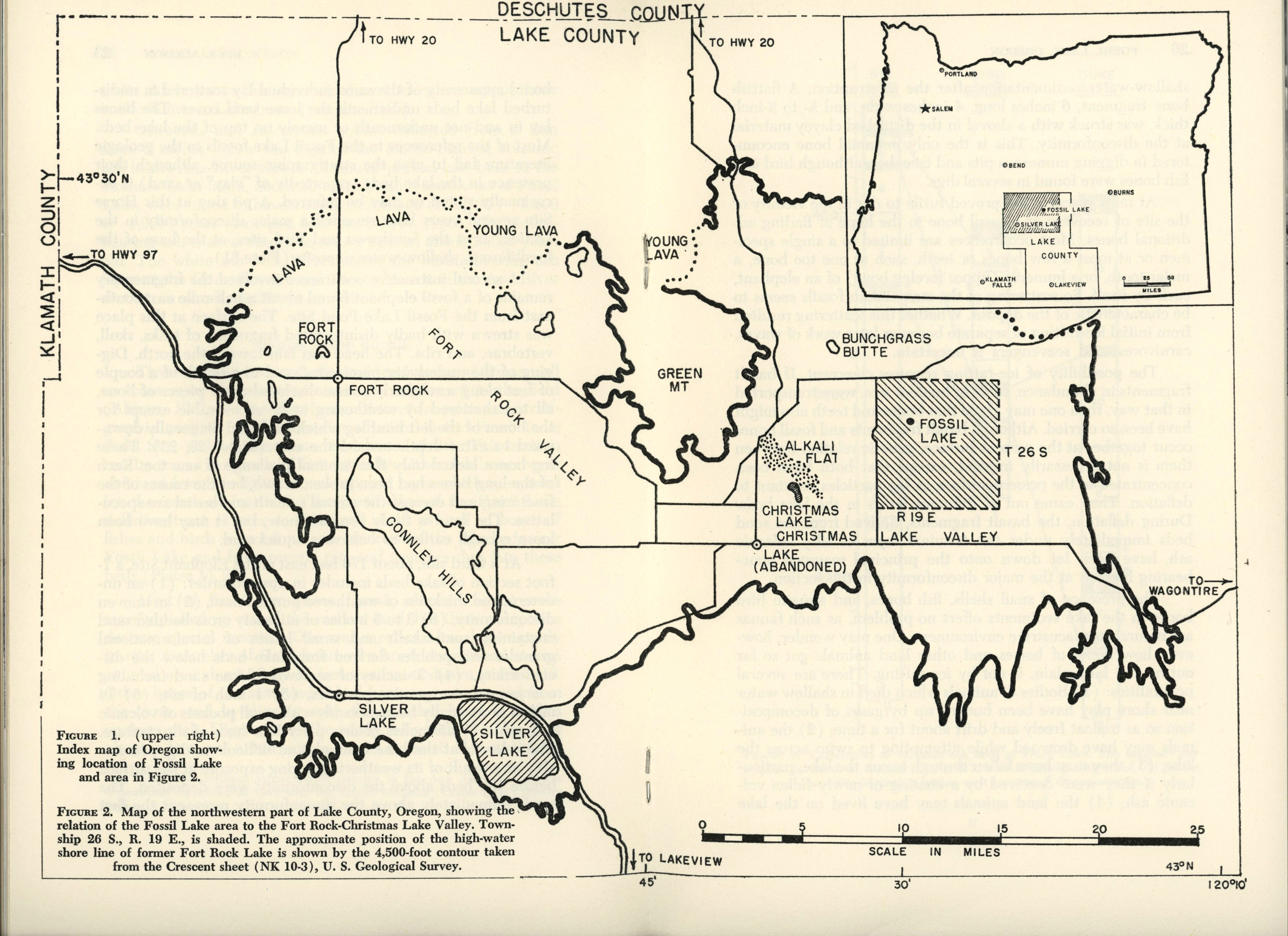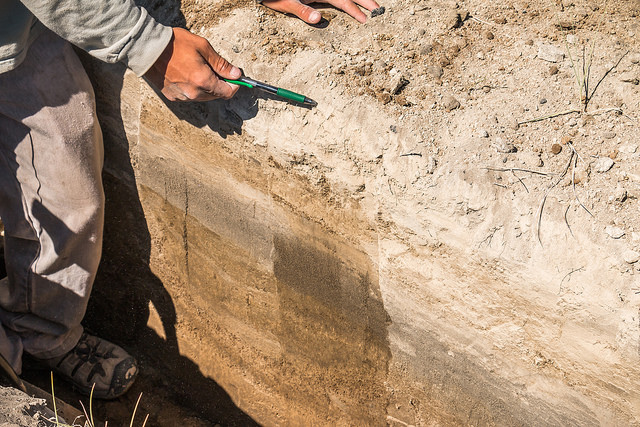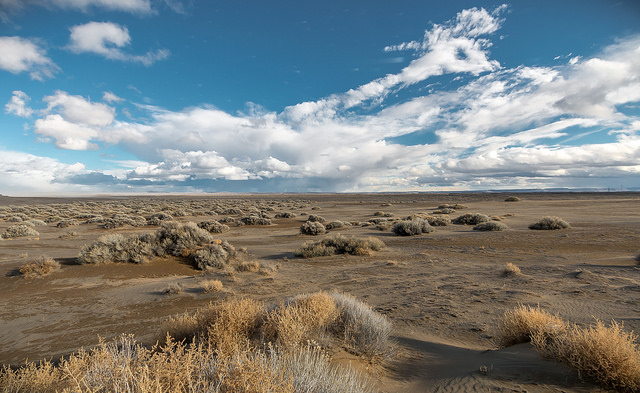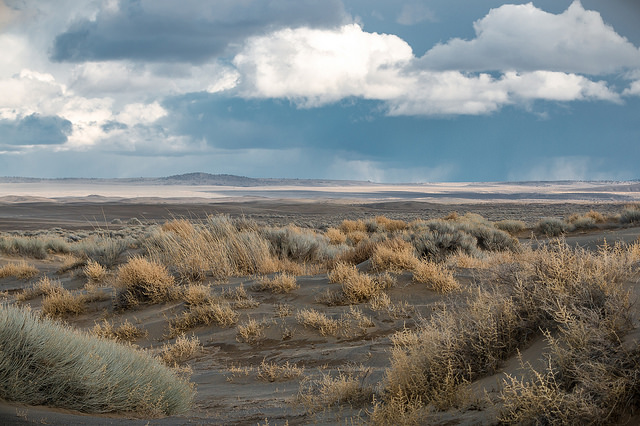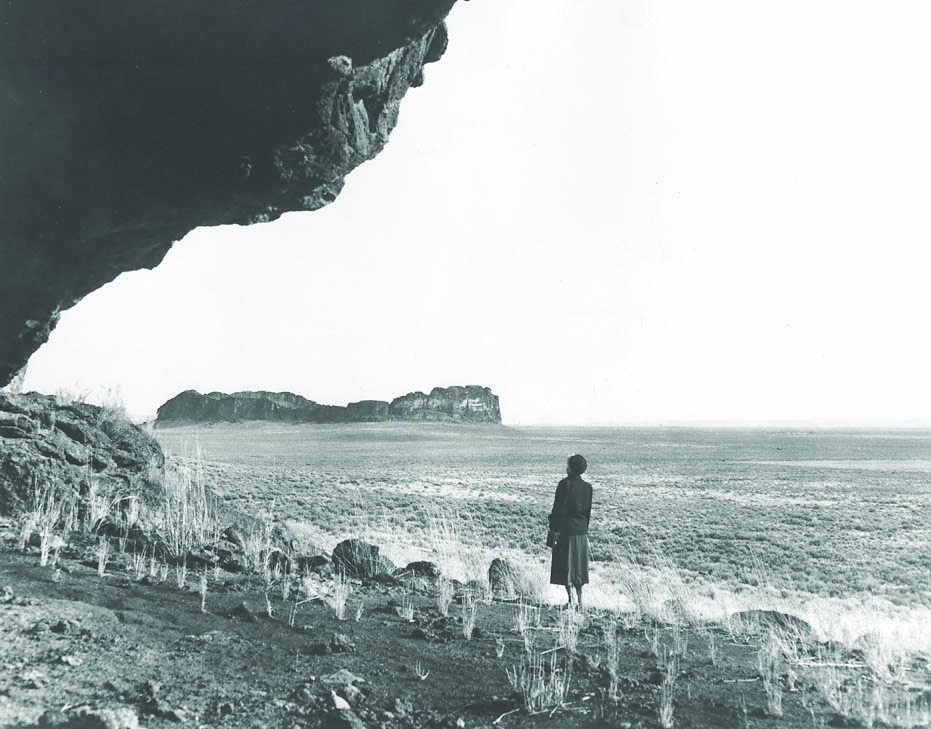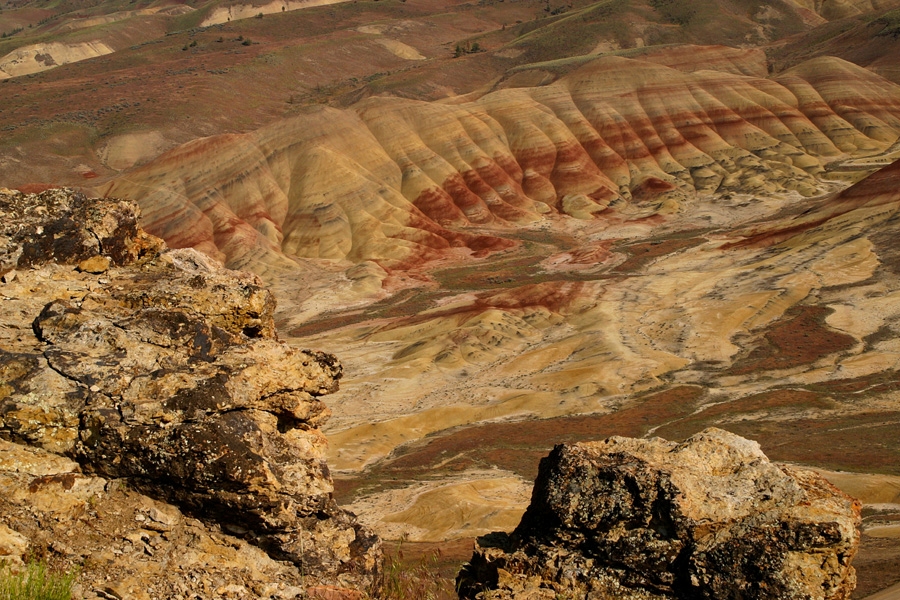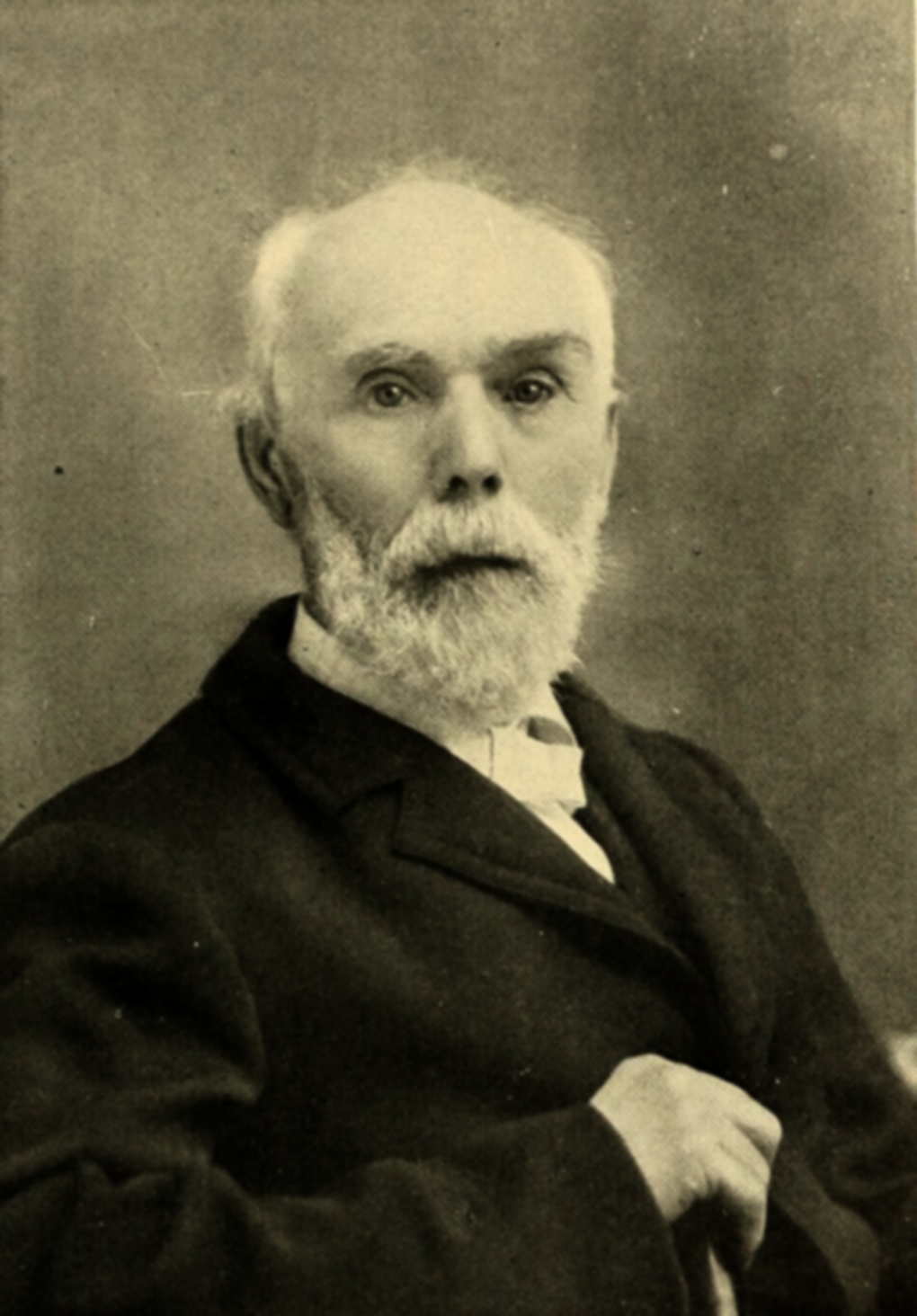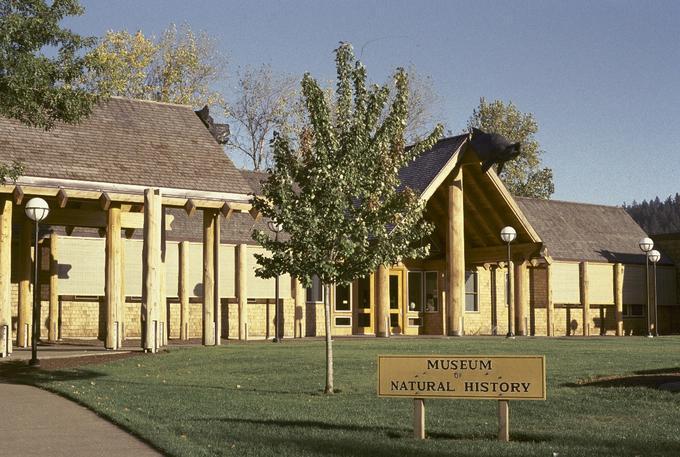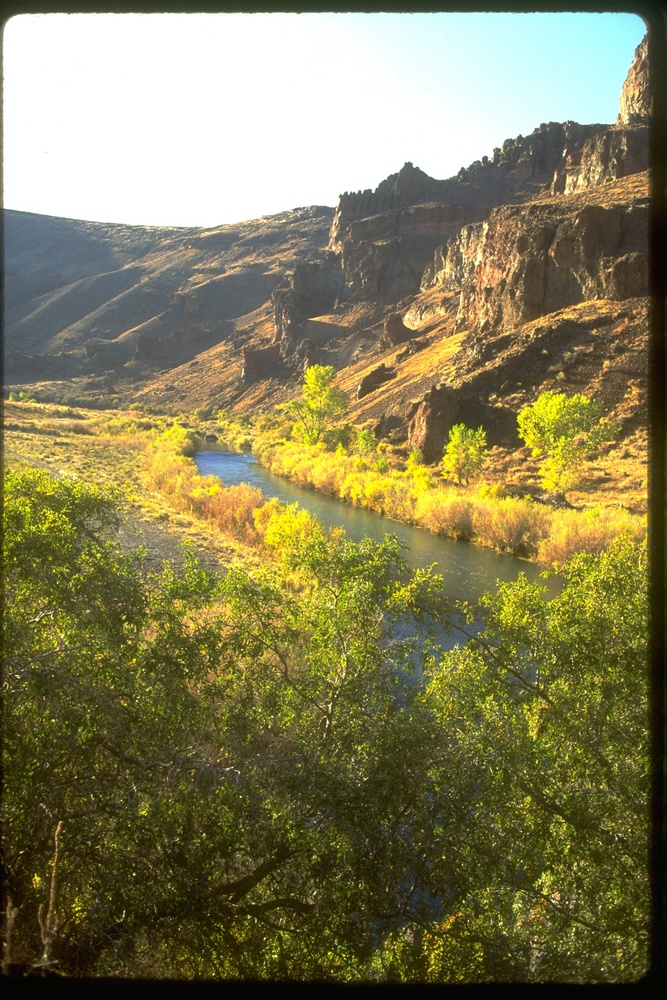A small, sandy playa in central Oregon's Fort Rock Basin, Fossil Lake is one of the nation's most significant fossil sites, with fossils ranging from 10,000 to 400,000 years old. Since the 1870s, this remnant of the prehistoric pluvial Fort Rock Lake has drawn the interest of paleontologists and geologists who have identified hundreds of species of mammals, birds, fish, reptiles, and invertebrates, including extinct mammals such as mammoth, dire wolf, and giant beaver. Fossils excavated from the dry lake bed and nearby grounds are held by the Condon Collection at the University of Oregon Museum of Natural and Cultural History, the Smithsonian Institution, the American Museum of Natural History, the Yale Peabody Museum of Natural History, and the University of Louisiana Geology Museum.
John Whiteaker, the first governor of Oregon (1859-1862), is credited with introducing Fossil Lake to scientists after he saw fossils there in September 1876 while on a camping trip. The following June, after soliciting advice from Thomas Condon, the state geologist, Whiteaker returned to the site with a small party on June 20, 1877. "The fossil remains lie scattered over the earth for a distance of four or five miles in the direction of northeast and southwest," he wrote. "Near the southwest end…are two small Lakes or ponds, highly impregnated with alkali. We named these ponds…'Fossil Lakes,' applying the prefixes of east and west to them." The name Fossil Lake now refers to both ponds, which are dry.
Whiteaker returned to Eugene with more than two hundred pounds of fossils from the site. "We found fossil bones of the elephant [mammoth], camel, horse and elk or reindeer," he wrote, plus birds, fish, and other large animals he could not identify. Condon, excited after examining the finds, left for Fossil Lake a few weeks later with a group of researchers on what the Albany Register described as "a scientific expedition…to gather a collection of bones from the 'big boneyard' recently discovered in Lake county." They arrived on August 4, 1877, and conducted the first scientific examination of the site. In about seven hours of searching, Condon found many fossils, including "eighty bird-bones which were unusually perfect and in a fine state of preservation."
Prominent scientists visited Fossil Lake, including paleontologist Edward Drinker Cope in 1879 and geologist and geographer Israel Cook Russell in 1882. In 1901, the University of California's John C. Merriam and Annie Montague Alexander led an expedition to the lakes, followed in 1923 and 1924 by Merriam's successor Chester Stock and Eustace Leopold Furlong of the California Institute of Technology. Geologist Ira S. Allison, at Oregon State University, initiated more than thirty years of study there in 1939.
By 1977, the era of collecting fossils in bulk ended, replaced by stratigraphically controlled excavations that connected fossils with the precise layer of earth in which they were found. This process, pioneered and refined at Fossil Lake by paleontologist James E. Martin over more than forty years, delineated a framework of eighteen lithostratigraphic units representing nine prehistoric episodes of lake fillings. Detailed re-collection at Fossil Lake under Martin's oversight—first through the South Dakota School of Mines and Technology and later the University of Louisiana, Lafayette—has identified hundreds of thousands of stratigraphically collected specimens, including invertebrates such as freshwater gastropods (snails), ostracods (seed shrimp), and pelecypods (mussels).
On a field trip to Fossil Lake in 2014, paleobotanist Gregory J. Retallack, on the faculty at the University of Oregon, discovered a Columbian mammoth trackway site at Fossil Lake. He and a team from the University of Oregon, the Bureau of Land Management, and the University of Louisiana at Lafayette returned to study the site in the summer of 2017. They concluded that the trackway had been made by a limping, seriously injured female mammoth attended by a concerned baby and several juvenile mammoths who were "approaching and retreating, as if they were interacting."
The 6,540-acre Fossil Lake Area of Critical Environmental Concern is administered by the U.S. Bureau of Land Management. While public collection of fossils is prohibited, paleontological study continues through a permit process designed to protect the site and its resources.
-
![Mammoth Trackway site.]()
Fossil Lake, 2017.
Mammoth Trackway site. Courtesy Bureau of Land Management Oregon and Washington
-
![]()
The map from "Fossil Lake, Oregon, Its Geology and Fossil Faunas," by Ira S. Allison, OSU, 1966.
Courtesy Oregon Hist. Soc. Research Lib., Coll., PAM557.91.A438f
-
![Fossil Lake, 2017.]()
Excavation of Pleistocene-era Columbian Mammoth Trackway..
Fossil Lake, 2017. Courtesy Bureau of Land Management Oregon and Washington
-
![View of sand dunes.]()
Fossil Lake, 2017.
View of sand dunes. Courtesy Bureau of Land Management Oregon and Washington
-
![View of sand dunes.]()
Fossil Lake, 2017.
View of sand dunes. Courtesy Bureau of Land Management Oregon and Washington
-
![]()
Christmas Valley Sand Dunes Map.
Courtesy Bureau of Land Management Oregon and Washington
Related Entries
-
![Fort Rock Cave]()
Fort Rock Cave
Fort Rock Cave is located in a small volcanic butte approximately half …
-
![John Day Fossil Beds National Monument]()
John Day Fossil Beds National Monument
John Day Fossil Beds National Monument, established in October 1975, sh…
-
![John Whiteaker (1820–1902)]()
John Whiteaker (1820–1902)
John Whiteaker, a self-educated farmer from Lane County, was elected in…
-
![Pleistocene Pluvial Lakes]()
Pleistocene Pluvial Lakes
During the Last Glacial Maximum, from about 24,000 to about 18,000 year…
-
![University of Oregon Museum of Natural and Cultural History]()
University of Oregon Museum of Natural and Cultural History
Located in Eugene on the University of Oregon (UO) campus, the Museum o…
-
![U.S. Bureau of Land Management]()
U.S. Bureau of Land Management
The Bureau of Land Management (BLM) administers over 15.7 million acres…
Related Historical Records
Map This on the Oregon History WayFinder
The Oregon History Wayfinder is an interactive map that identifies significant places, people, and events in Oregon history.
Further Reading
Allison, Ira S. Fossil Lake, Oregon: Its Geology and Fossil Faunas. Corvallis: Oregon State University Press, 1966.
Clark, Robert D. The Odyssey of Thomas Condon. Portland: Oregon Historical Society Press, 1989.
Martin, James E. "Stratigraphic Distribution of Pleistocene (Irvingtonian and Rancholabrean NALMA) Fossil Remains at the Classical Fossil Lake Area, Lake County, Oregon." Paludicola 11.3 (December 2017).
McCornack, Ellen Condon. Thomas Condon: Pioneer Geologist of Oregon. Eugene: University of Oregon Press, 1928.
Retallack, Gregory J., James E. Martin, Adrian P. Broz, Brent H. Breithaupt, Neffra A. Matthews, and Dean P. Walton. "Late Pleistocene Mammoth Trackway from Fossil Lake, Oregon." Palaeogeography, Palaeoclimatology, Palaeoecology (2018).
Shine, Gregory P. "Fossil Lake Mammoth Trackway Reveals Clues about Earth’s Past." Bureau of Land Management, Oregon Facebook page. Facebook.com. Last modified February 12, 2018.
Sternberg, Charles H. The Life of a Fossil Hunter. New York: Henry Holt, 1909.
Whiteaker, John. “A Trip to the Fossil Beds.” Eugene City Guard, September 29, 1877.


